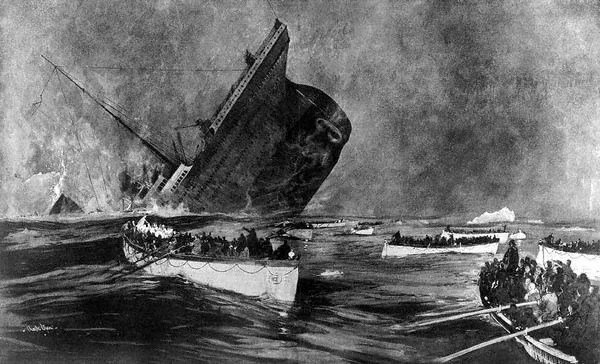Originally published @ Scuba Scoop 12 March 2012
Some people like to read mysteries.
Ross Richardson likes to dive for them.
He traces his interest in shipwrecks back to a contest in first grade when he wrote about a wreck. That fascination quickly developed into a passion.
“I love solving mysteries,” says Richardson, who is from Lake Ann, Michigan, which is about 15 miles west of Traverse City. He has focused his interest on the Great Lakes, mainly on nearby Lake Michigan, and to a lesser extent on lakes Huron and Superior.

While serving on the sheriff’s public safety dive team of Michigan’s Benzie County, Richardson, 44, was doing ice-diving training on Higgins Lake in central Michigan with a woman whose father had disappeared there years before. Her story of her dad’s disappearance intrigued Richardson. So did the demise of up to 50 aircraft and countless ships in Lake Michigan.
He not only started diving for wrecks of ships and planes but established a website on the subject http://www.michiganmysteries.com/ and is writing a book. It is called “The Search for the Westmoreland, the legend, the history and the discovery of Lake Michigan’s Treasure Ship.” He hopes to have the book published by this summer.
The Westmoreland sank during a severe snowstorm on December 7, 1854, off Lake Michigan’s Sleeping Bear Point, “probably the most notable landmark in the Lower Peninsula,” says Richardson. One of the early propeller-driven ships, the Westmoreland had lost its engine power during the storm. “They tried to get the sails up but one was imbedded in ice and the other was ripped apart (by the gale).” Hopes of bringing the ship to the safety of South Manitou Island’s harbour were dashed. Half of the 34 occupants of the ship died, while the others made it ashore in a lifeboat.
The ship had been the subject of many searches in the ensuing 150-plus years until Richardson located it on July 7, 2010, using Side Scan Sonar. Three days later he dove to the site and confirmed the finding. He found it was well preserved, a fact he attributes to its resting place in an uncharted hole near Sleeping Bear Dune that sheltered it from currents. It was sitting upright and was nearly intact.
Richardson’s sources in researching vanished ships and aircraft include old newspapers. Using Google news archives, digitalized newspapers can be searched using key words. “I get an amazing amount of information there. Half my information is from there,” he says. “The other half is from local historical societies and micro-film in libraries.”
Typically, for a ship missing for so long, the Westmoreland’s legend has grown to include unconfirmed stories that gold and 280 barrels of whiskey were among the cargo being transported. One story maintains that the lumberjacks on board, thinking they were going to die, started drinking the whiskey and belatedly tried to launch the last lifeboat. It was the largest lifeboat, but it was tipped over when the ship’s crane caught it on its side, dooming the lumberjacks. It is known, at least with more certainty, that the cargo included oats, flour, grass seed and beef quarters. Most of it was from Chicago but some came from Milwaukee.
Richardson has also located three uncharted wreck sites at Sleeping Bear Point near a 450-foot sand dune. He says there are big parts of a ship, an old schooner and the remains of an old sailing vessel with tons of artefacts around it. During an October gale in 2010 a large section of a shipwreck washed ashore, so he looked a couple of miles offshore and found the wreck sites.
“I think they have been there since the late 1800s,” Richardson says, adding that they are in the heart of the Manitou passage, which was “almost the highway of its day.” Sleeping Bear Point jutted out into this passage and became a hazard during storms.
One of the missing aircraft that intrigues him is a Northwest Airlines DC-4 that crashed into Lake Michigan on June 23, 1950 during a storm. All 55 passengers and the three crew members died but the aircraft has never been found. At that time, it was the largest death toll in an aircraft crash.
The National Underwater and Marine Agency (NUMA) team of novelist and marine archaeologist Clive Cussler has come for the last eight or nine years to search for the plane but has yet to locate it, says Richardson. “These guys are the best.”
His website also chronicles missing persons in the area of his research and bodies that have not been found.
A technical diver qualified to go to depths well beyond the range of recreational divers, Richardson’s major focus is on shipwrecks.
While he doesn’t have a problem with a museum or historical society having a relic from a shipwreck to display, he isn’t interested in it for himself: “I believe in conserving wrecks. I haven’t taken anything off a wreck.”
For Ross Richardson, the thrill is in the search: “It’s amazing how many missing things there are that are solvable mysteries.”
Read Michigan Mysteries by Ross Richardson
Kathy Dowsett
March 2012::Update::Ross is humbled to announce that he has signed a publishing deal with Arbutus Press for his upcoming book “The Search for the Westmoreland”, Lake Michigan’s Treasure Shipwreck”, due to be out this summer.






Leave A Comment